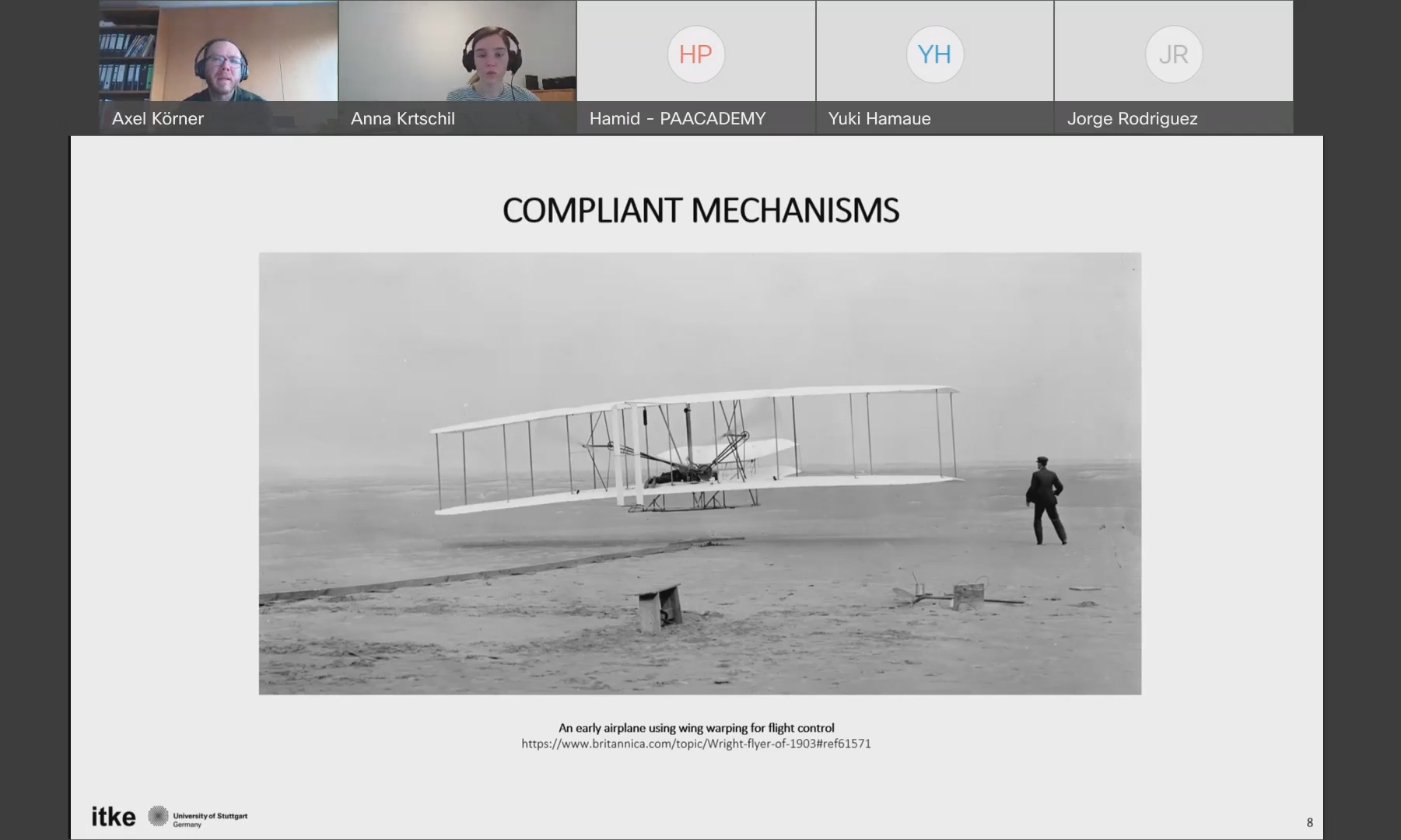The Elastic Architecture studio workshop aimed to present the architectural applications of material-driven deformation behavior. The workshop conducted by PAACADEMY in partnership with ITKE, University of Stuttgart, explored numerous simulation and form-finding methodologies for designing with elastic deformation and motion. You can register to Elastic Architecture and watch the recordings of the workshop.
What happened?
Prof.Dr. Jan Knippers, the head of the Institute for Building Structures and Structural Design (ITKE) at the University of Stuttgart, delivered an intriguing lecture to open the workshop session. In the first place, he gave a short introduction about the group ITKE and the different compliant kinematic mechanisms they utilize. Jan then looked into the functional-morphological relationships and the complex geometries that take nature as an inspiration source. Namely, he referred to Venus Fliegenfalle, Bird-Of-Paradise(Strelitzia reginae), Aldrovanda vesiculosa, or some biological investigations like folding and unfolding the beetle’s wings while flying, which is actuated by pneumatic pressure in the wings.
He highlighted the merits of the systems that can be adapted to different geometric configurations, both in synclastic and anticlastic ways, and that he sees the potential of these systems for the future.
Then participants were given the fundamentals of structural analysis, moveable structures, shape changes, and the methods used to make a complex geometry more understandable and predictable. Anna explained the experimental, graphical, analytical, and numerical approaches to understand the structural behavior to predict and guarantee the ability and rigidity of the structure. Additionally, she explored the Finite Element Method (FEM) as the most widely used method for solving engineering and mathematical models problems.
Axel Körner, later, dived deep in elastic architecture, compliant mechanisms, and the technical challenges of adaptive façade elements. He outlined the importance of concepts and technological solutions that enable architectural applications to adapt to shifting spatial and structural constraints and environmental effects. He referred to elastic mechanisms as the motion principles based on the elastic deformation of fibrous materials enabled by the study of biological systems.
The Practical section was employed in Grasshopper 3D, using plugins such as Karamba, Kangaroo, and Sofistik. For the motion calculations, several beams, shells, and grid structures were performed. Afterward, the relatively new plugin of Sofistik was utilized to specify the structural elements used in our model.
Presentations
Students/teams were supposed to develop a kinetic application within an architectural context in which compliant mechanisms facilitated the mechanical concept. Below you can find the proposed presentations.
Jorge Rodriguez – Injy Ashour
The team designed the Bloom pavilion, which deforms in response to human weight. Its kinetic mechanics, which were inspired by the blooming behavior of flowers, were modeled using the Karamba plugin. The digital model facilitated the development and refinement of its morphology and materiality by analyzing numerous load situations. The structure’s major component was a deformable frame constructed of elastic glass fiber rods coupled to an actuator system that rotated outwards when human weight was applied. The elastic rods were joined to form a petal, with a tensile membrane inside, creating a kinetic and changing interior space.
Negin Aalami
Negin was inspired by the honeycomb structure as a compatible framework for a responsive facade. She analyzed the system’s design by generating a hexagonal grid pattern in Grasshopper 3D, from which each surface was retrieved. She defined the point loads, flapping plate, and support points and repeated each step for the moving part. Finally, she benefited from the Karamba plugin for the structure analysis.
Romain Russe – Pablo Herraiz García de Guadiana
The team explored the orthotropic qualities of wood and its potential as a shading device. They developed a hinge that connected different meshes and evaluated the reaction of the prototype in its physical state by the Karamba plugin.
Sidharth Tayal
Sidharth attempted to develop a facade system with kinetic louvers. He benefited from a compliant mechanism for the kinetic application based on the elastic deformation of elements with the support of some load and force application.
Sonia Basurto
Sonia was inspired by the notion of the Mimosa plant that folds over its central axis when touched. She designed a bridge that deforms and closes inwards based on the weight of pedestrians while crossing the bridge. The deformation caused by this is transferred to the support points, which allows the forces to be passed to the railing elements.
Last but not least
Despite the widespread image of our built environment as something static and permanent, architects and engineers are striving to adapt and reconfigure throughout the history of architecture. Likewise, the diversity of concepts and technical solutions of the realm verifies the future potential of such systems.
Indeed, it is not late if you are interested in learning the architectural potentials of material-driven deformation behaviors. You can register to Elastic Architecture and watch the recordings of the workshop.































Leave a comment